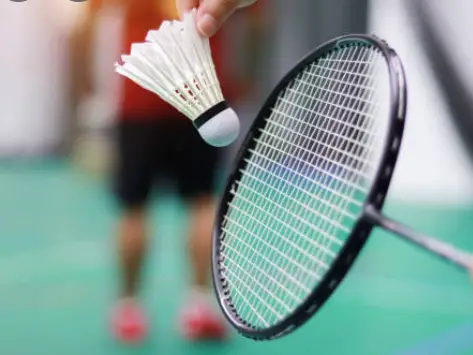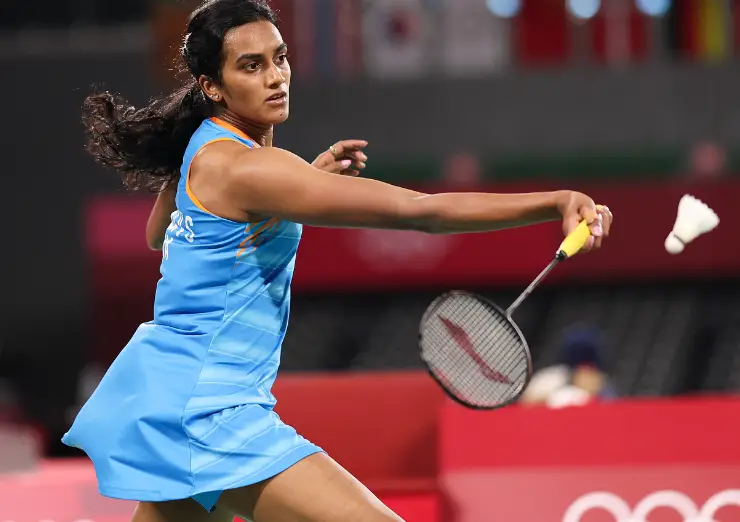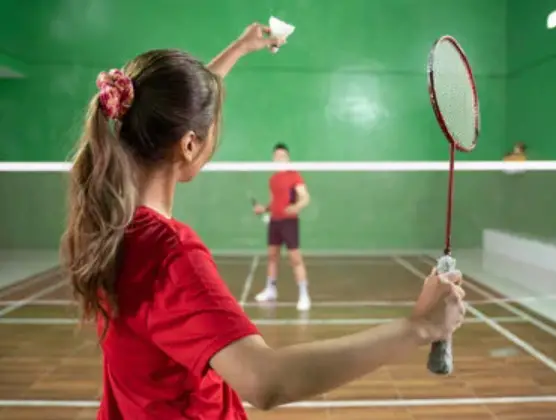The serve is arguably the most important aspect of the game as it is the one shot required in every rally. You have as much time as you need to prepare, so you have no excuses if things go wrong. Here we demonstrate and explain his three basic types of serves: high serve, low serve, and flick serve.
Start the rally with a serve. Someone has to hit the shuttle first! To prevent the server from gaining an overwhelming advantage, there are special restrictions on serves that do not apply for the rest of the rally.
The receiver is the person who hits the second shot in the rally. In doubles, the receiver’s partner must not hit this shot.
What Are The Basic Serving Rules?
Here are the basic rules of the badminton serve.
- The shuttlecock must be below the player’s waist when serving.
- In badminton serving rules, the hip is the lowest rib on the chest.
- The player must hit the cork of the shuttle first, and the clubhead must face down on the serve.
Single serving rules
There are no unique and challenging rules for serving singles other than what’s inside and outside the court. A single serve box is described as long and narrow because when a player serves his box behind the serve, the court is inside and the wide box is outside. Service boxes start at the center line and the short service line. The service location stops at the first sideline and rolls back to the rear perimeter.
Doubles serve rules
In doubles, a player can only get one serve per side, and as soon as one side loses a point, the serve switches to the next pair. A double service court is called a short and wide service court. When a player serves, the serve’s back box is out, but broad his ox is in. The rules of serve remain the same and players must follow the same rules to avoid making mistakes. There is no difference between doubles and doubles serves. The service court in doubles begins with the short service line and center line. The service court ends at the extreme touchline and extends to the first long service line.
What Kinds Of Serves Are There In Badminton?
- High badminton serve
This type of serve is usually done when you want the shuttle to land at the back of the court. A good high serve requires the shuttle to swoop behind the court. A high serve prevents your opponent from hitting a strong smash. Instead, you’re more likely to expect a lob or drop from your opponent (if you can’t jump smash).
Try to hit the shuttlecock into your opponent’s backhand area. The goal is to force the opponent to use the backhand. This is because most badminton he players, even world-class players, have a weak backhand (compared to their forehand). For example, you are at position X. You’re trying to hit a big serve and your opponent is right-handed. In this case, the A point indicates the shuttle.
This forces the opponent to use a backhand, thus increasing the chances of returning a weak shot.
If the opponent’s backhand hits his area but the opponent refuses to use the backhand, the opponent must move away from the base. This gives you the chance to take advantage of the opportunity to control the game when your opponent has bad footwork in badminton. High serves are effective against opponents who cannot throw powerful shots from the back of the court.
However, some badminton players (especially tall players) are also capable of throwing powerful shots (usually bouncing his shot) from the back of the court.
In this case, consider using low markup instead. This is also the reason why pro players like to use low serves these days.
- Low serve in badminton
Low serve is used when you want to drop the shuttle in front of the court (in front of your opponent).
On a good low serve, the shuttlecock flies right over the net. If not, the opponent has the opportunity to lunge forward and smash the shuttle. A low serve, if executed well, prevents an opponent from making an aggressive shot.
Unlike the high serve, the ball can be dropped anywhere in front (either in the opponent’s forehand area or backhand area). There is no big difference either way because it does not interfere with the opponent’s footwork.
First, practice your serve so that the shuttle lands directly in front of your opponent.
- Fast serve (“fake” low serve)
A “fake” badminton low serve can also be used to trick your opponent (to trick your opponent into expecting a low serve).
If you are in his low serve position, chances are your opponent is expecting a low serve. However, you can squeeze your thumbs and snap your wrists to send the shuttlecock flying up and toward the back of the court.
Knowing how to serve is one thing. Practice is another. If you want to hit the perfect serve, keep practicing until you make no mistakes!
What Are Common Faults When Receiving Serve?
There are many rules for serving, and many restrictions to ensure that serving does not become an overwhelming advantage. Taking a serve also has rules to even things out. Let’s take a look at these.
- Receiver must not move before serving
- Liquidators must stand in their respective surcharge courts
- If the receiver attempts to return serve, he is considered ready
His first two points are self-explanatory, the same rules apply to servers for the same reason. The third point is different. Let me explain. If the server serves before the receiver is ready, play a let and play the serve again. However, if the receiver tries to return it in any way, he loses the right to play the let. This is to discourage players from taking advantage and saying they are not ready when their opponent is serving well.
What Is The Importance Of A Good Badminton Serve?
A good badminton serve is important for several reasons:
- It sets the tone for the rally: A well-placed serve can put your opponent on the defensive and give you an early advantage in the point.
- It can disrupt your opponent’s rhythm: A serve that is difficult to read or return can throw off your opponent’s game plan and give you a chance to take control of the rally.
- It can score points: If you can execute a strong serve that your opponent is unable to return, you can score an easy point.
- It allows you to control the pace of the game: By serving aggressively or defensively, you can dictate the tempo of the rally and keep your opponent guessing.
Overall, a good badminton serve is essential for establishing a strong presence on the court and gaining an advantage in the game.
Conclusion
A badminton serve may not be as important as a lawn tennis serve. For example, ball speed and accuracy are critical to scoring points. A correct serve is one in which the player uses the racket to hit the shuttlecock over the net and onto the opponent’s side, without the shuttlecock getting caught in the net or beyond the boundaries of his badminton court. part of is in contact with the court surface.






